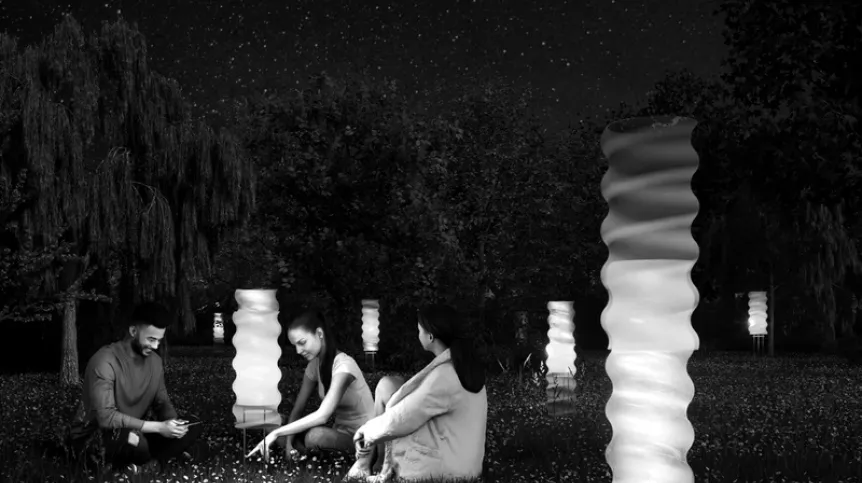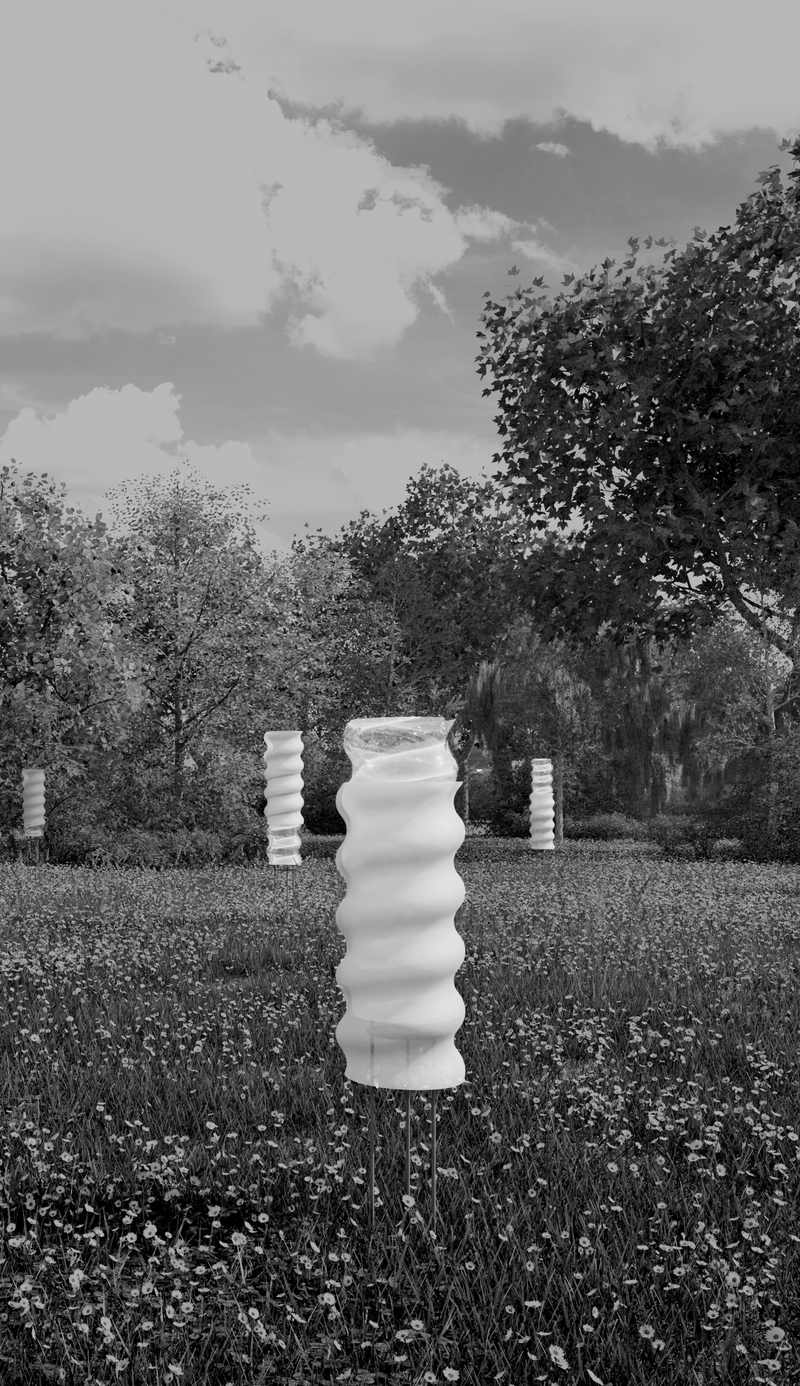
Lamps that 'collect' light during the day thanks to luminescent paint and shine with a delicate glow in the evening can be boosted by illuminating the lamp with a phone flashlight to give more intense light.
The project of architect students from the Wrocław University of Science and Technology is in the finals of the international Velux Award competition.
The Polish lighting project for green areas is one of ten selected from among nearly 470 applications. The lamps do not require electrical installation and emit light that does not disrupt the natural landscape with its intensity.
Representatives of the Faculty of Architecture of the Wrocław University of Science and Technology - Iwona Kin, Alicja Smoczyk, Agata Czugała and Paweł Mordeja - decided to build on a commonly known solution. They used a water bottle placed on a flashlight to create a temporary lamp. They added two important elements: luminescent paint and a flashlight built into the cell phone. Their (No)Daylight project was created under the supervision of Dr. Bartosz Adamiczka and Dr. Tomasz Broma.
They explain that 'collecting' daylight using luminescent paint will create a subtle network of light points, making a night walk around the area, e.g. a park, pleasant and safe. At the same time - if necessary - placing a phone flashlight under the lamp would give temporary better illumination.
'Such lamps can be an element of the landscape of green areas without unnecessary light pollution and interference with the surroundings. Our solution would provide light without the need for electrical installation, and would not be intense enough to disrupt the natural landscape', the students say.
The architects focused on glass, matte finish and appropriate curves in their design. They analysed many shapes, textures and fillings to create a form that most effectively transmits light.
'The best effect was achieved by an object made of glass, with uneven walls and filled with water. A matte coating would limit the amount of emitted light but give a more pleasant glow. Based on these conclusions, we designed a lamp consisting of two parts screwed together. The internal object would be made of transparent glass, while the external one would be a lampshade with a matte finish. By moving the upper part, you can adjust the amount and intensity of light', the students say.

They add that the perpendicular curvature 'collects' light, making it brighter, and filling the lamp with water allows the light to be distributed evenly over the entire shape, creating a more pleasant glow. Additionally, the matte finish of the top lamp cover helps control the amount of light for a more subtle, unusual effect.
The lamp has also been designed to have minimal impact on the ground when not in use. It does not interfere with the greenery and allows plants to grow underneath it.
The International Velux Award competition aims to encourage architecture students to discover the role of daylight in architecture and inspire creative use of light in projects. Since 2004, representatives of 800 universities from 130 countries have participated in the competition.
The winners of this year's edition will announced in August. When assessing projects, jurors take into account how the project addresses contemporary and future challenges, whether students experimented with the topic they undertook, as well as project documentation and the level of its innovation.
The Wrocław University of Science and Technology students will present details of their project to the jury, competing with four other teams in the 'Daylight Investigations' category. More about the competition on the International Velux Award website.
PAP - Science in Poland
kol/ agt/
tr. RL













